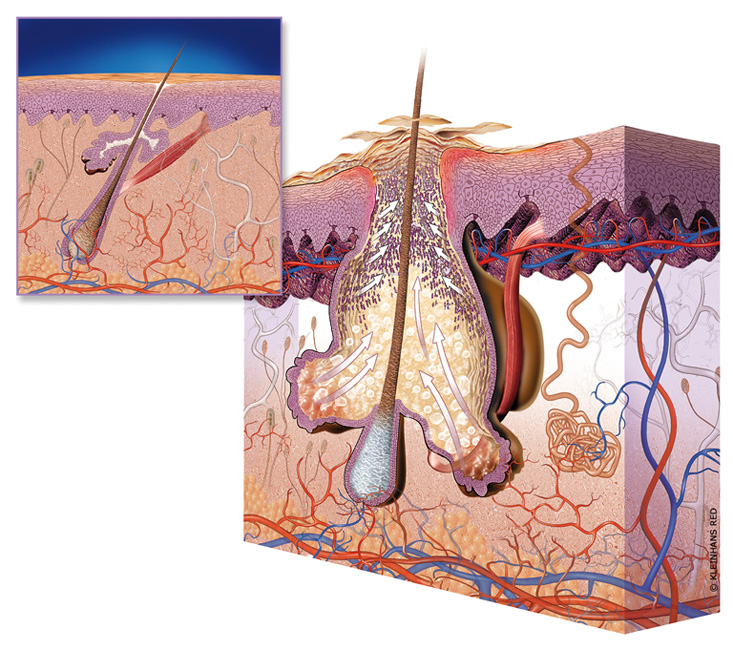Keratinization of the duct of the hair follicle
Impure skin is often a disorder resulting from oily skin. If excessive amounts of sebum are produced and a hornification disorder occurs at the same time, this can lead to impure skin or acne. Small horny plugs are formed and lead to a blockage of sebum secretion. Comedones, commonly known as blackheads or whiteheads, are the result.

Acne vulgaris is an inflammatory skin disorder and is the most common type of skin disease among teenagers. The typical changes in the hormonal production at this age play a role in the etiology of acne. Further factors leading to the manifestation of acne are an increase in lipid production by the sebaceous glands, keratinization disorders, bacterial proliferation and inflammatory responses within the pilosebaceous unit. In addition, a genetic predisposition, hormonal changes, environmental factors as well as the use of cosmetics which are improperly used or contain comedogenic substances also need to be taken into consideration. As acne is a disorder of the pilosebaceous unit, acne-like changes generally occur in skin areas which contain a high amount of sebaceous glands, in particular the face and upper body.
Our illustration on the left, which gives a schematic representation of the pilosebaceous unit, shows how sebum is produced by the sebaceous gland, is transported to the skin’s surface via the duct of the hair follicle and is secreted through the follicle opening. On the skin’s surface, sebum naturally spreads in dependence on the skin’s hydration and environmental influences. The healthy hair follicle is not influenced by the sebum production, it remains intact.
The drawing on the right depicts a sebaceous gland under conditions leading to the formation of comedones. The sebaceous gland is intact or possibly enlarged and overproduces large amounts of sebum. If the skin is acne-prone, abnormal keratinization and desquamation of the keratinocytes lining the follicle results in the formation of excessive keratinous debris which combined with sebum can clog the opening of the hair follicle.
The sebum cannot reach the skin’s surface and thus comedones are formed (open comedo – blackhead; closed comedo – whitehead). In the course of time, pus-filled pustules may develop from the comedones. This takes place when the follicular canal is ruptured and accumulated sebum is emptied into the adjacent tissue, thus eliciting inflammatory responses. In addition, Propionibacterium acnes may easily increase thus leading to additional inflammatory responses. If the inflamed lesions spread into the surrounding tissue, large nodules may be formed which can lead to scar formation.
